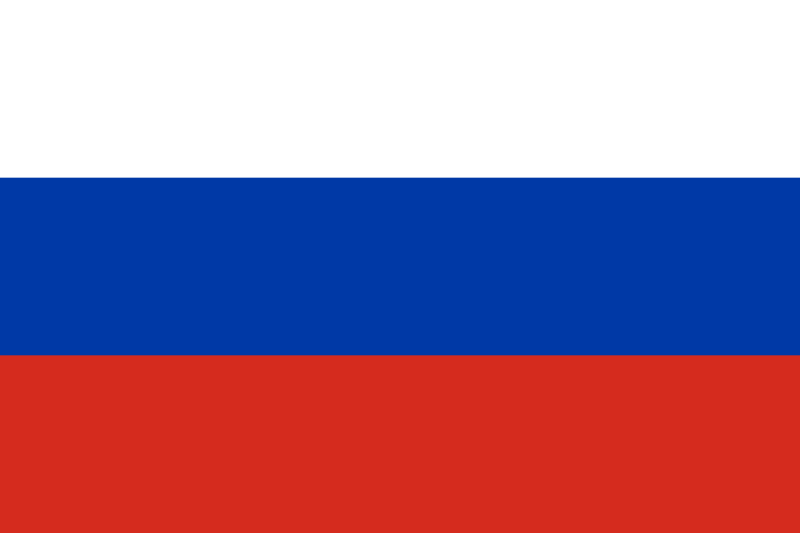Russian Federation
History
The remnants of the Russian government fled and took refuge in Ukraine where they collaborated with members from the NU to retake control over the country. The generals coup was defeated quickly by the population of Moscow but, rather than reinstall the exiled government they formed a third faction opposed to the corrupt exiled government and the Soviet restorationist. The war degenerated from that point with hundreds of factions forming along the entire Russian territory. Not only was the exiled government incapable of restoring order but they also failed to provide security for their allies in eastern Europe as they began losing territory to the rebels in Belarus, Ukraine and Georgia in 1998. During this period Kuznetsov began appearing as a popular figurehead for the exiled government but his ties to China and more controversially the DPRK as well as his skepticism for the allied intervention made cooperation between the Vladivostok government and the exiled government nearly nonexistent. Both governments claimed to be a singular entity and recognized each other but neither much cared for what the other did. It wasn't until the pacification of the far east and the massive reorganization of the Russian Armed Forces in 1998 that the Kiev government started demanding for Vladivostok to recognize them as the only legitimate government. In 1999 Kuznetsov, ordered an invasion of the rebel held Central Asian republics as part of his pacification campaign in Xinjiang and as a foothold for the pacification of central Russia. This campaign was widely condemned, particularly by the Kiev government who attempted to discredit Kuznetsov as an imperialist but as it turns out, pissing off the NU and doing imperialism was loved by most Russians who widely supported Kuznetsov campaign into Central Asia. The Vladivostok government had broad support from the Chinese both in the NU and in military guarantees against a western intervention which forced the Kiev government to relent and back up Kuznetsov occupation of Kazakhstan; that said, their initial opposition undermined their legitimacy to the point where they became completely irrelevant for the rest of the civil war. The capture of Chelyabinsk served as a rallying cry for the people of Russia to align with the Vladivostok government and facilitated the pacification of the Volga in 2002, Ural in 2003 and Central (2003) districts. These victories vastly improved material conditions for the people of Russia and restored confidence in the country. In 2003 the Vladivostok government moved to Moscow and declared themselves the legitimate government of Russia; the Kiev government returned to Moscow and limited itself to refer to the new government as the "Transitional Government".
In 2004 the transitional government called for elections in which the ran Michil Morozov (Мичил Морозов) the presidential plenipotentiary of the Far East District and head of the Vladivostok civilian government during the civil war as the candidate for the newly instituted Russian Communist party. The new government set itself into restoring economic activity in the country and restore communications along the Trans-Siberian railway. This government saw Russia return to a planned economy and the restoration of many pre Khrushchev policies in the guise of mobilization. This along with Chinese economic support helped in restoring economic conditions to a state close to that before the fall of the Soviet Union. In 2008 Morozov retires so the communist run Mavriki Kuznetsov for the presidency. Kuznetsov is elected by an 70+% margin which prompted doubts of fraud among the western powers. Kuznetsov put a definite end to the civil war in 2012 ending the insurrections in the Caucasus and Siberia.
Kuznetsov was reelected for a second term in 2012, this term has been characterized by a rapprochement with Eastern Europe and Central Asia along with multinational infrastructure projects between these countries and Russia.
President Mavriki Kuznetsov
Mavriki Kuznetsov (Маврики Кузнецов) was the leader of the Russian army during the 1995-2012 Russian Civil war.
He was estranged from the government in Moscow after the initial coup and suffering from a severe lack of resources to maintain the army he turned to China for material and economic support.
The Chinese government welcomed the opportunity to use the Russian army to bolster its strength and integrated Kuznetsov army into a Chinese-Russian-Korean integrated command to restore order along the Eastern coasts.
Kuznetsov was appointed the leading General for the United Command. He arose as a leading figure in the Russian civil war thanks to his capture of the Russian Pacific Fleet from Soviet rebels.
For the next three years Kuznetsov managed to pacify most of the Far Eastern Federal District, with the notable exception of the Republic of Yakut.
Vladivostok became the de facto capital of Russia headed by Michil Morozov (Мичил Морозов) the presidential plenipotentiary in the Far East as the civilian leadership and Kuznetsov as the head of the military.
In 1999 he led a campaign into rebel occupied Kazakhstan in order to establish a supply line between Xinjiang and Chelyabinsk, where the Russian offensive into the Volga could begin.
Kuznetsov disinterest in the NU's complaints and his effectiveness in the field elevated him as a national hero protecting the country against foreign influence.
Kuznetsov would serve as Minister of Defense under which he oversaw the pacification of the Volga, the Urals and Central Districts which vastly improved conditions for the federation.
Kuznetsov ran for president in 2008 and 2012, both times winning by a landslide. His term has seen the restoration of Soviet economic policy and the strengthening of Russian influence in Mongolia, Turkey, Romania, Belarus, the Balkans, the Middle East and Central Asia.
Outside of Russia Kuznetsov is seen as an authoritarian opportunist stuck in the 1930s. It's widely believed that the elections of 2012 were manipulated by the Kuznetsov government.
Locations
Russian Teams

Remove these ads. Join the Worldbuilders Guild









Comments